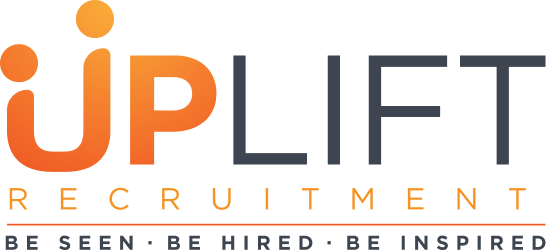
How to Deconstruct a Job Posting
How long do you spend reviewing a JOB POSTING before you apply?
A few minutes, a few seconds?
44% of job seekers said they spent between one and five minutes reviewing a job posting according to a study that used eye-tracking technology on TheLadders’.
This study tracked and found that most job seekers are only spending 49.2 – 76.7 seconds reviewing a job posting.
It’s not surprising that we often meet people who accept and start jobs only to find out that their day-to-day work is much different than they expected.
At Uplift Recruitment, we believe you and your application will miss A LOT if you don’t do a more thorough review before you submit your application.
Start by reading the job posting SLOWLY and CRITICALLY so you don’t miss any detail or the big picture.

The Anatomy of a Job Posting
Make sure you understand the JOB TITLES and the role of each of the SECTIONS of the job posting.
JOB TITLES can be misleading. Look to other clues such as years of experience required and salary to indicate what career stage the employer is looking for. Jobs requiring 1-3 years of experience are generally entry-level, 4-9 years is mid-level, and over 10 years usually indicates a senior/management level position. Salary can also indicate the level of seniority you’ll need to be a successful applicant.
Most job postings are broken into sections including:
- a general overview or summary of the company and the role;
- a key responsibilities section that lists job duties;
- a qualifications section, which includes educational requirements, certifications, years of experience and other skills.
You can use these sections to vet your interest and the possibility of being hired. You can also use these sections to fuel your resume and cover letter. Make note of repeated phrases and keywords, they will come in handy in your application and interviews.

Job Requirements & Duties
Your next step is to analyse job REQUIREMENTS and DUTIES …
REQUIREMENTS (also called qualifications or experience) is where you’ll find the accomplishments and skills an applicant should have. This is where you’ll find what kind of background the employer is seeking, including prior work experience, accomplishments, education, and hard and soft skills.
DUTIES (Responsibilities) is the tasks you’ll perform in the job. Be sure to read this section very closely and think about whether you could see yourself doing this particular job day in day out. Would you enjoy this job? Think about how this section matches up with your work experience on your resume. If you draw some similarities, you’ll have better chances once you apply. If there’s no overlap, keep looking.
KNOW THIS: you do not have to meet every single job requirement or be able to do every duty right off the bat. Good hiring managers are able to spot translatable skillsets and ultimately it is up to them to decide whether you can do the job or at least learn to do the job. Don’t get hung up on meeting every task perfectly because that is unrealistic. Where you don’t have the specific skills listed on the job description, be sure to highlight your less common skills and accomplishments and describe how you will compensate for inexperience in those areas.

Get Intel on the Company’s Values
Learn to READ BETWEEN THE LINES of a JOB LISTING and get to KNOW the COMPANY before you interview.
Sometimes generic or nondescript job requirements are asking you to read between the lines by providing specific examples of how you meet that requirement. Use your resume’s bullet points to highlight ways that you meet job requirements or can fulfil duties with factual evidence. Things like sales numbers or increases in revenue go a lot further than just saying, “excellent sales skills.”
We also urge our candidates to get to know the companies that they apply to by reviewing their website, ethos, values, etc. That way you’ll know whether you’re a good fit and have lots of questions to ask if you get an interview.

When to Read the Job Posting
Use a job posting as a roadmap with the end destination being “getting the position.” It’s not enough to review briefly the map at the beginning of a long journey and then chuck it out the window. You’ll want to read the job posting carefully and more than once including:
- At first glance: do a quick review and scan for compatibility.
- Before writing a cover letter: Cover letters need to be custom-tailored to each job you apply for.
- Before updating your CV: You should also update your CV for each job. Your goal is to demonstrate how you’ve met the job requirements and how your previous experience prepared you for the duties. Be sure to highlight the skills most relevant to that particular job.
- Before submitting an application: Right before you click submit, have one more read through. Be sure you followed the directions in the job listing correctly so you don’t leave out a key element. Also, compare your cover letter to the job requirements and duties, do you demonstrate that you meet the description?
- Before an interview: Get that job listing out again while you prepare for your interview. It will help you remember key talking points to use with the hiring manager.
If you really want to ace your interviews and land the job of your dreams, you must pay critical attention to the job posting. Every job description contains a roadmap to follow to one destination: getting hired for that role. If you read the listing thoroughly and use what says to shape the story you pitch about yourself to the hiring manager, you’ll be that much ahead of the other guy who doesn’t understand the role or follow the directions correctly. Happy reading.
